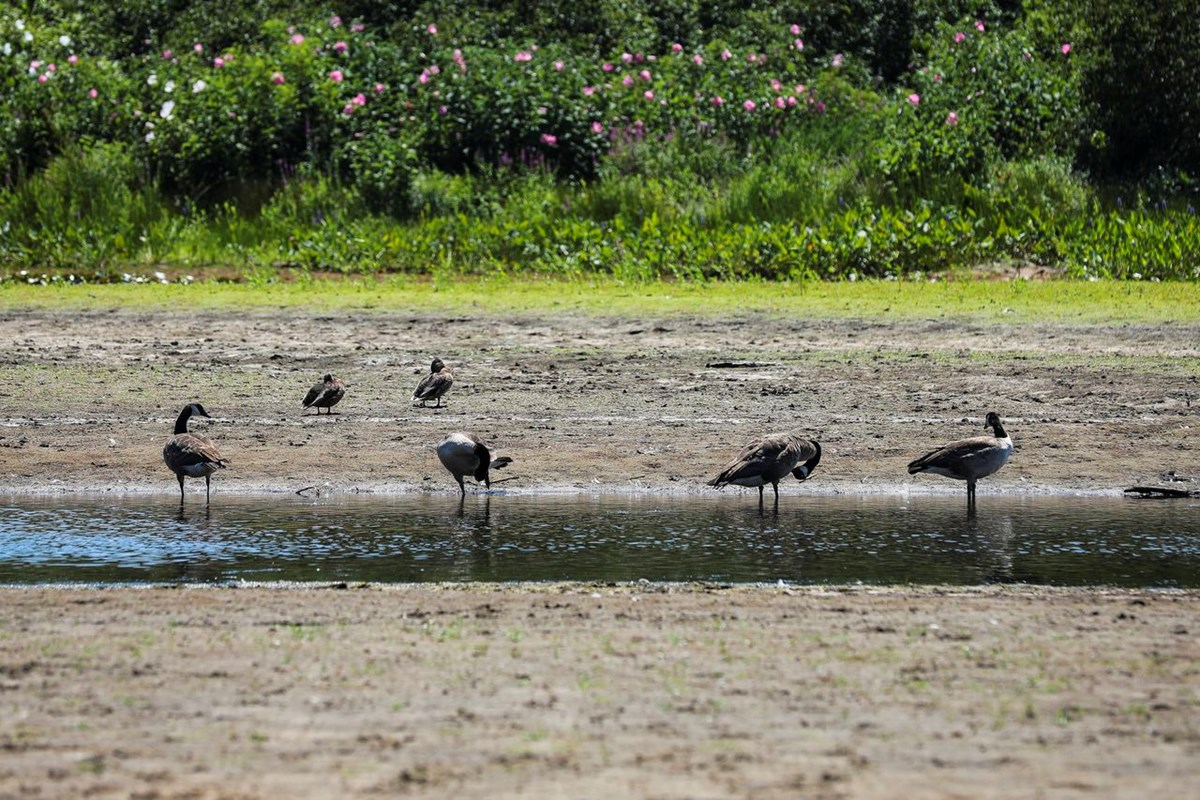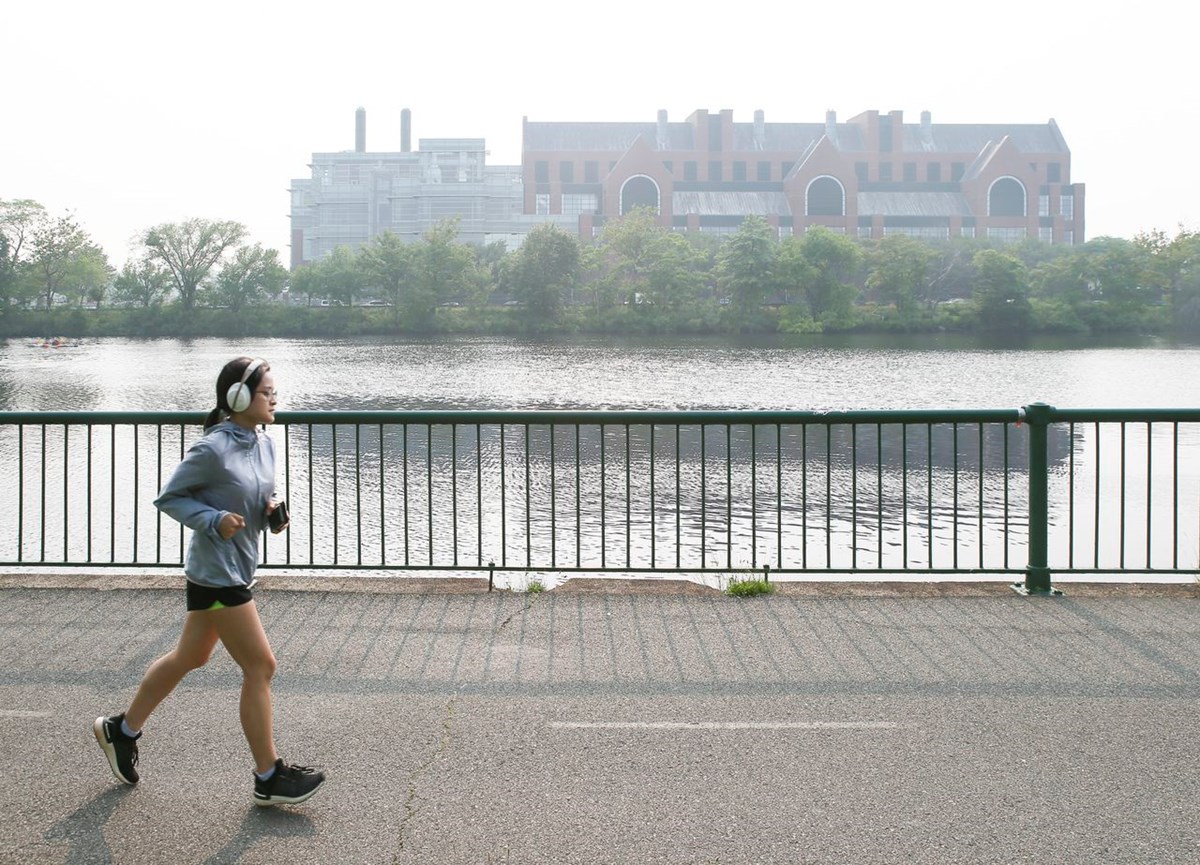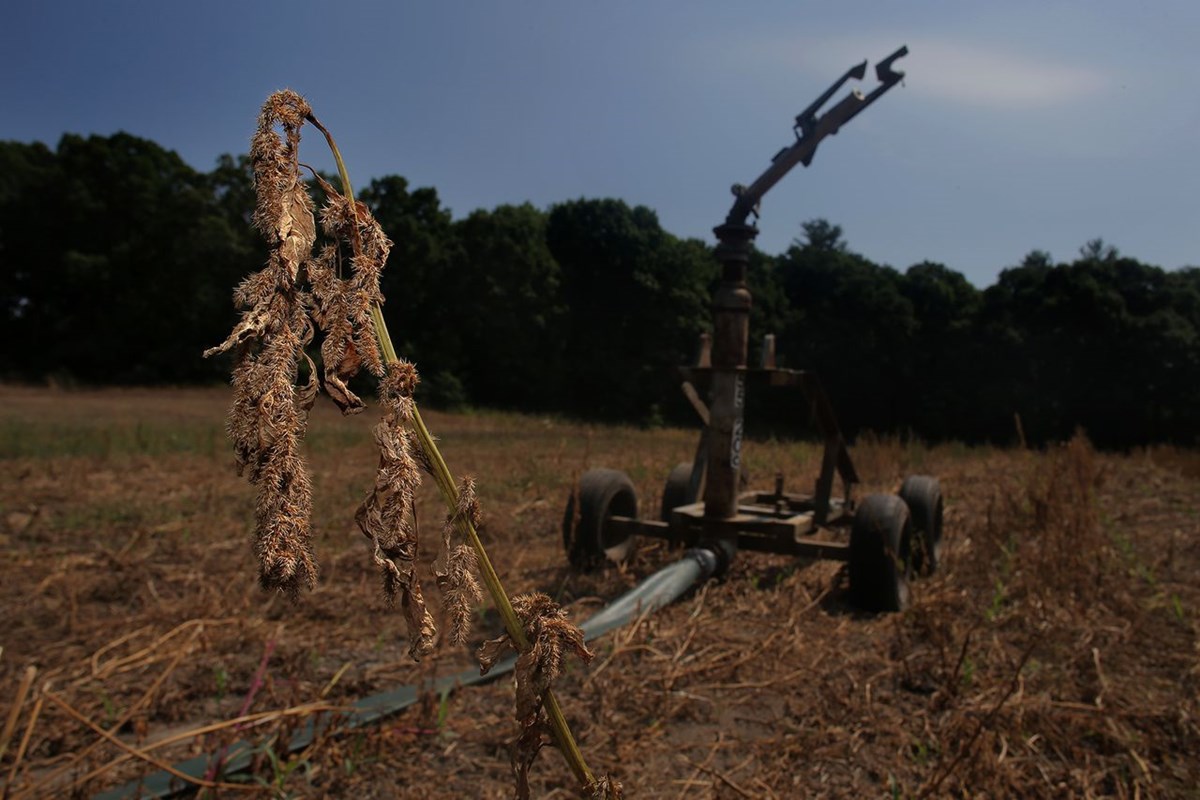 Image by Boston Globe/Erin Clark
Image by Boston Globe/Erin Clark
08/15/2022
By Juliette N. Rooney-Varga and Mathew Barlow
Reposted from the Boston Globe
Massachusetts’ current drought, the third in only 10 years, is rapidly worsening. Most of the state is in critical drought conditions and Boston’s 2022 rainfall is almost 9 inches below average. Streams are running low, farmers’ yields are impacted, and air quality is worse than normal.
In the western United States, drought conditions are becoming the norm. Reservoirs are evaporating and forest fire “season” is now year-round — not to mention the devastating impact on homeowners. Utah’s Great Salt Lake has reached its lowest levels ever recorded and, as a result, is at risk of releasing dangerous contaminants from its dried beds. In California’s Central Valley, drought cost farmers $1.2B in 2021 alone. Recent West Coast fires led to poor air quality and impacted public health as far east as Massachusetts.
Human-caused climate change is fueling rising temperatures and worsening droughts across the nation. Does this mean Massachusetts will look more like the West?
 Image by Boston Globe/Christiana Botic
Image by Boston Globe/Christiana Botic
Like a bucket, when air reaches its capacity to hold water, it rains. As air warms, that bucket gets bigger: It takes more water to fill it up, leading to drought. When it reaches saturation, there is more water to spill, causing more intense precipitation. The result is swinging from the rain storms that inundated the state last summer to our current drought and simultaneous devastating floods in eastern Kentucky.
In Massachusetts, climate change is increasing both droughts and annual rainfall. But weather whiplash also means a less desirable water supply. Drought-stressed trees are vulnerable to being damaged or uprooted during severe storms, destabilizing soils, and worsening erosion. Severe storms also generate more surface runoff, leaving less water to filter through soils and replenish groundwater and carrying soil into aquatic ecosystems. Worse, in suburban and urban areas, impervious surfaces like asphalt increase runoff, washing pollutants from roads into streams, rivers, and lakes.
We can each play a role in conserving water during a drought by taking simple steps that, collectively, can make a difference, such as:
- Limit outdoor watering to before 9 a.m. and after 6 p.m. and by using hand-held hoses to water ornamental plants only. Allowing our lawns to grow longer during mild droughts and go dormant during more significant ones saves water. In the longer term, planning for more sustainable ground cover, such as microclover, wildflowers, and indigenous plants, rather than cultivating thirsty grass, which fosters better water and landscape resiliency.
- Conserve water indoors by taking advantage of Massachusetts’ energy and water efficiency programs, which provide free low-flow faucets to residents. Turn off water when scrubbing dishes — or better yet run a full dishwasher. The same goes for laundry.
- Install rain barrels under downspouts to collect water for outdoor flower pots, filling birdbaths, and indoor plants. Many communities now offer rain barrels to residents at discounted rates.
Yet worsening droughts and other impacts of climate change demand leadership and commitment at the state level and beyond.
A University of Massachusetts report that we and others from the UMass Lowell Rist Institute for Sustainability and Energy coauthored found 89 percent of the state’s municipalities view climate adaptation and resilience planning as a priority. From protecting forests to building green infrastructure, there are many ways Massachusetts communities can respond to and prepare for intensifying droughts and floods. But we need to do more, we need to stop their cause.
 Image by Boston Globe/Lane Turner
Image by Boston Globe/Lane Turner
The Massachusetts climate act that was signed into law on Thursday is an important step. It makes it clear that burning wood to produce electricity worsens climate change and it prevents new wood-fired plants from getting renewable energy subsidies. It ensures that the state will invest in clean energy research and workforce development. It bans the sale of new gas-powered vehicles after 2035, increases rebates on most electric vehicles, and provides additional rebates for lower-income residents. And it supports important pilot projects, such as innovative and efficient networked geothermal heating systems, or GeoMicroDistricts, and fossil-free real estate development.
Do we think it is enough to meet science-based climate goals? No. But, together with support from the federal Inflation Reduction Act, Massachusetts is now building momentum toward a new climate economy that will bring jobs, energy security, and cleaner air to the Commonwealth.
It’s up to all of us to channel that momentum into more ambitious climate leadership, inspire other states and nations to act, and stop droughts and other extreme events from getting worse.
